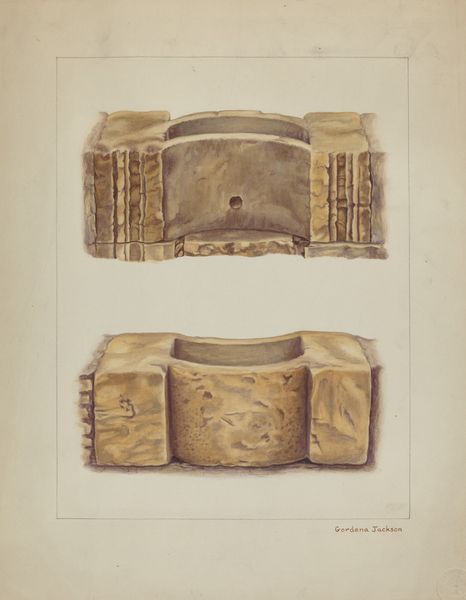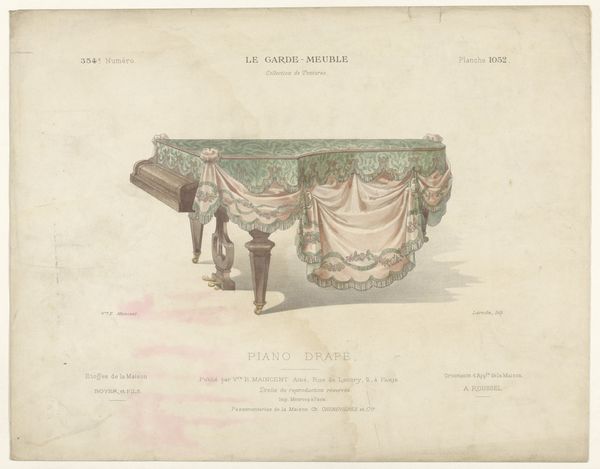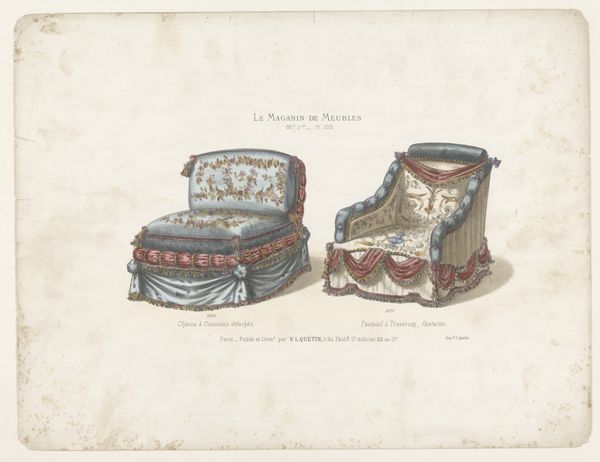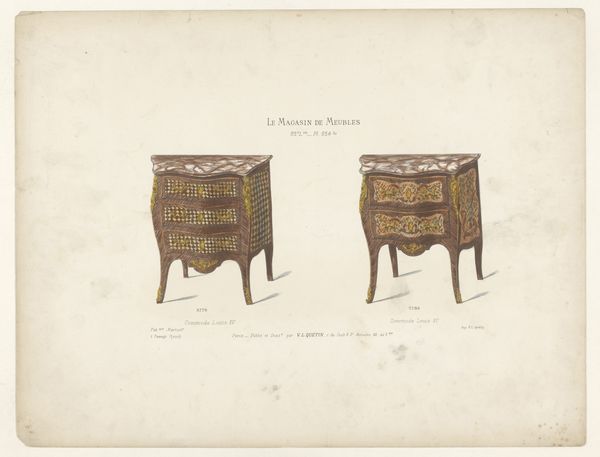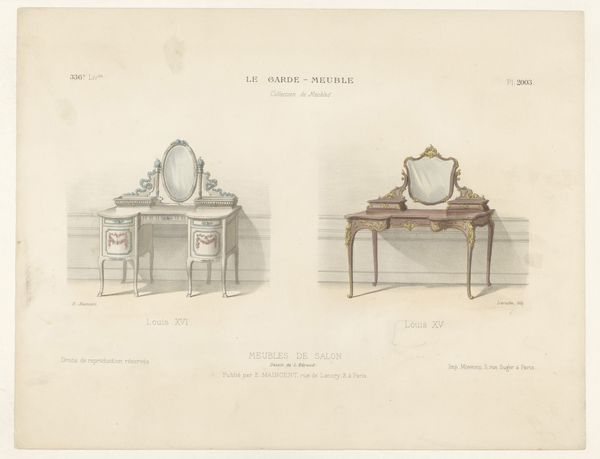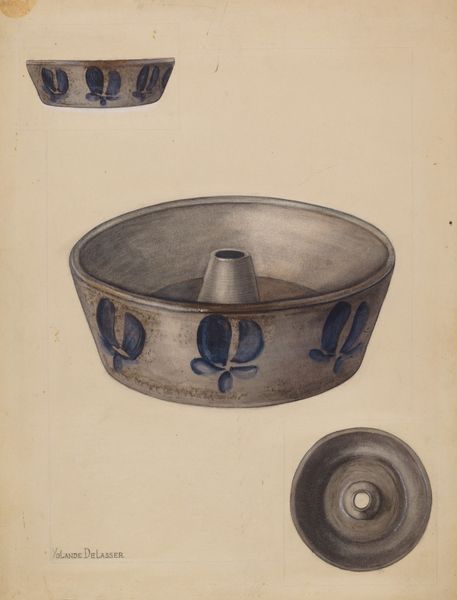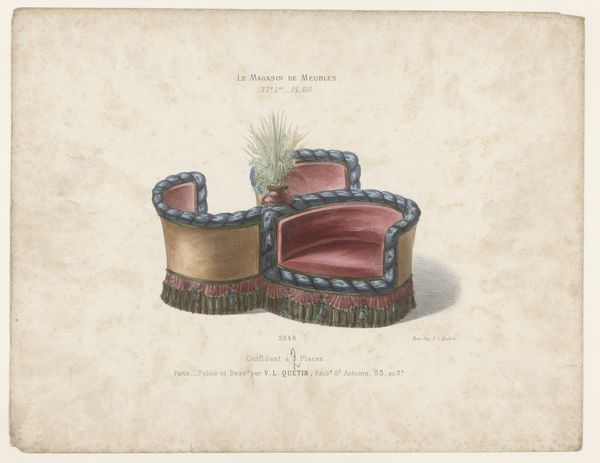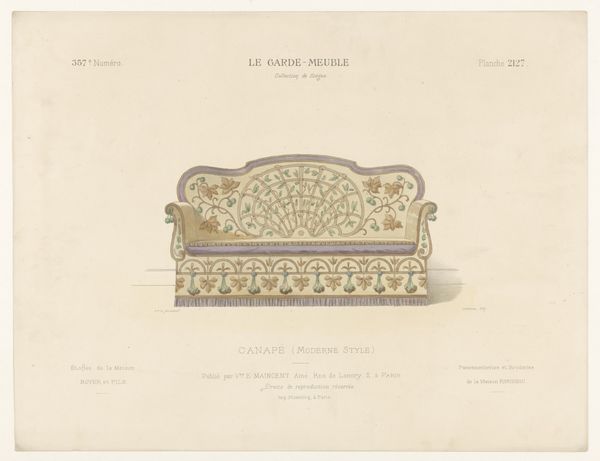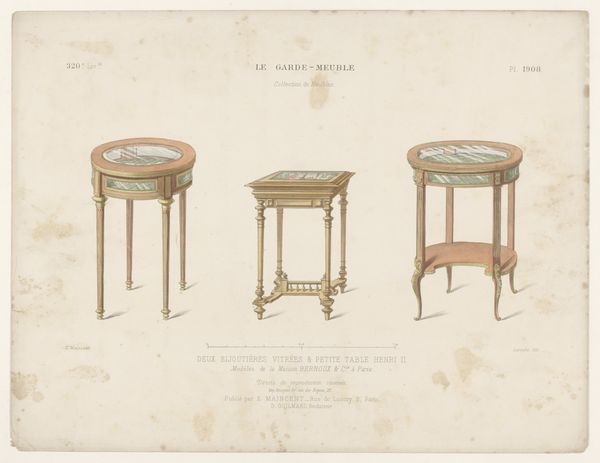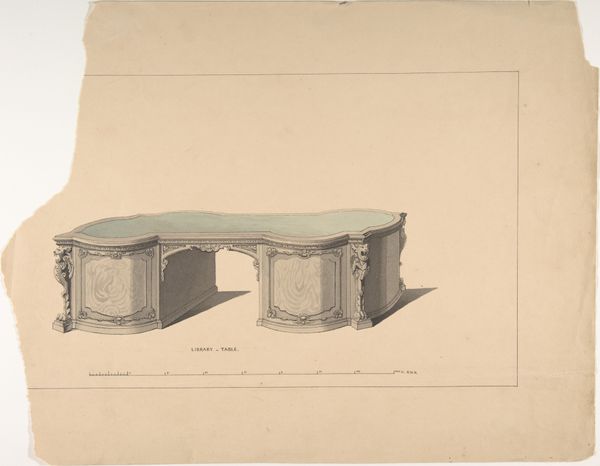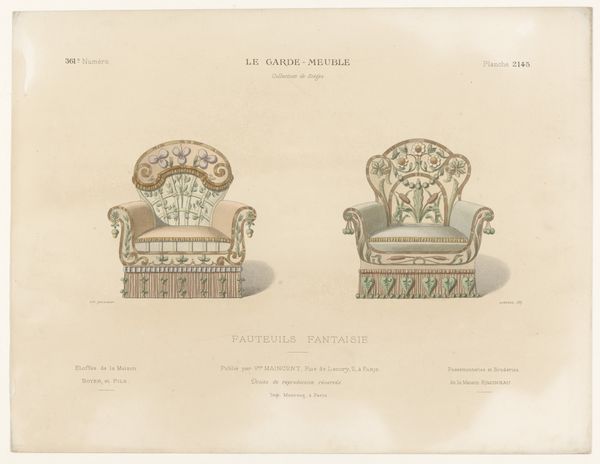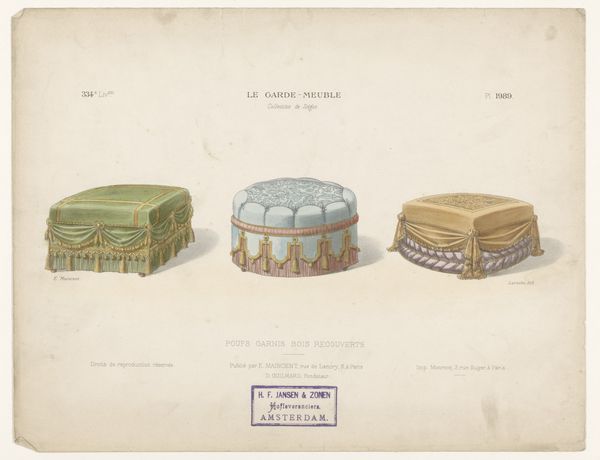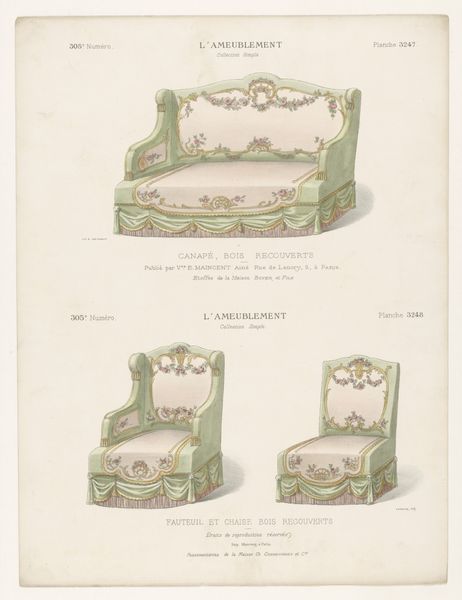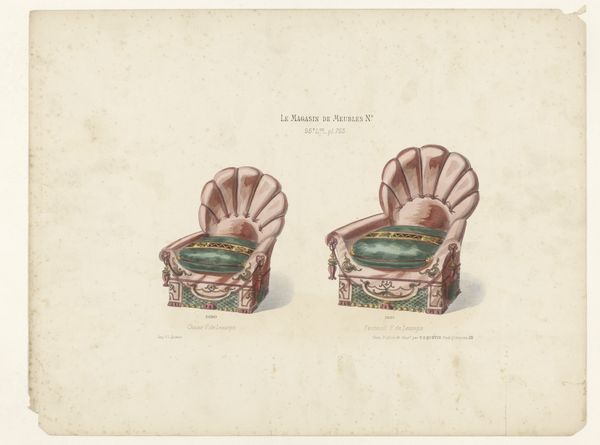
drawing, watercolor
#
drawing
#
art-nouveau
#
watercolor
#
intimism
#
watercolour illustration
#
decorative-art
#
watercolor
Dimensions: height 271 mm, width 359 mm
Copyright: Rijks Museum: Open Domain
Curator: Welcome! Here we have "Drie poefen," which translates to "Three Poufs." It's an early decorative drawing, made sometime between 1895 and 1935 by Léon Laroche, using watercolor. It's got strong Art Nouveau and decorative art elements. Editor: My initial impression is that it feels very gentle and nostalgic. The colors are muted, and there’s something inherently domestic about the image. Almost like looking at sketches for a dollhouse. Curator: Definitely, there is that sense of intimacy, something very much in keeping with what was going on at the time. The choice of watercolor speaks volumes. These are images intended for interiors, suggesting comfort and a delicate beauty. Editor: I find it interesting how these decorative objects are framed, though. At a time when the burgeoning middle class was accruing so many domestic goods, do you see this drawing as advocating for increased accessibility or maintaining a certain level of luxury, given that it depicts these rather fussy designs? Curator: That's a good point, and perhaps it's both. On the one hand, these are essentially designs for things meant to beautify domestic space, catering to those with the means to pursue such comforts. However, the very act of documenting and illustrating these pieces suggests a desire to disseminate them, making them accessible as patterns, inspirations, or attainable goals for a wider audience. Consider the psychology of aspiration at play. Editor: Yes, that aspiration is visible. And seeing those very obviously hand-drawn design elements feels… handmade, in contrast to the coming era of mass manufacture. This moment feels suspended in time before those changes would become completely solidified. It preserves that desire for ornate individuality at a turning point. Curator: Precisely! It holds that cultural memory. And perhaps there’s a hidden comment on status. It speaks of refined sensibilities, almost an encoded language for belonging within certain circles. It says, "I appreciate beauty, craftsmanship, and have a cultivated eye". Editor: Yes! Even those little ribbons. Now that I notice the tassels! So many signals embedded in one little poof. Well, this definitely adds a few new layers to how I see my grandmother’s furniture now! Curator: It is amazing, isn't it, how an object—or even a drawing of an object—can contain so much history. Thank you for sharing these intriguing perspectives with me.
Comments
No comments
Be the first to comment and join the conversation on the ultimate creative platform.
